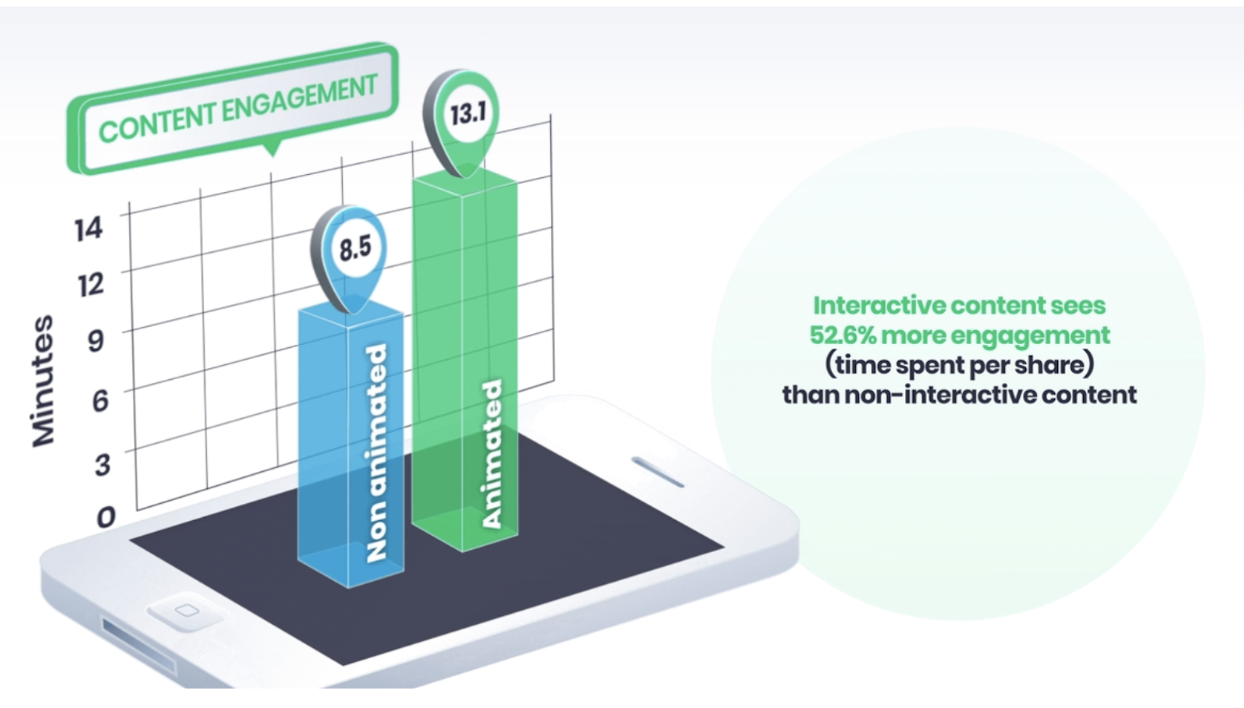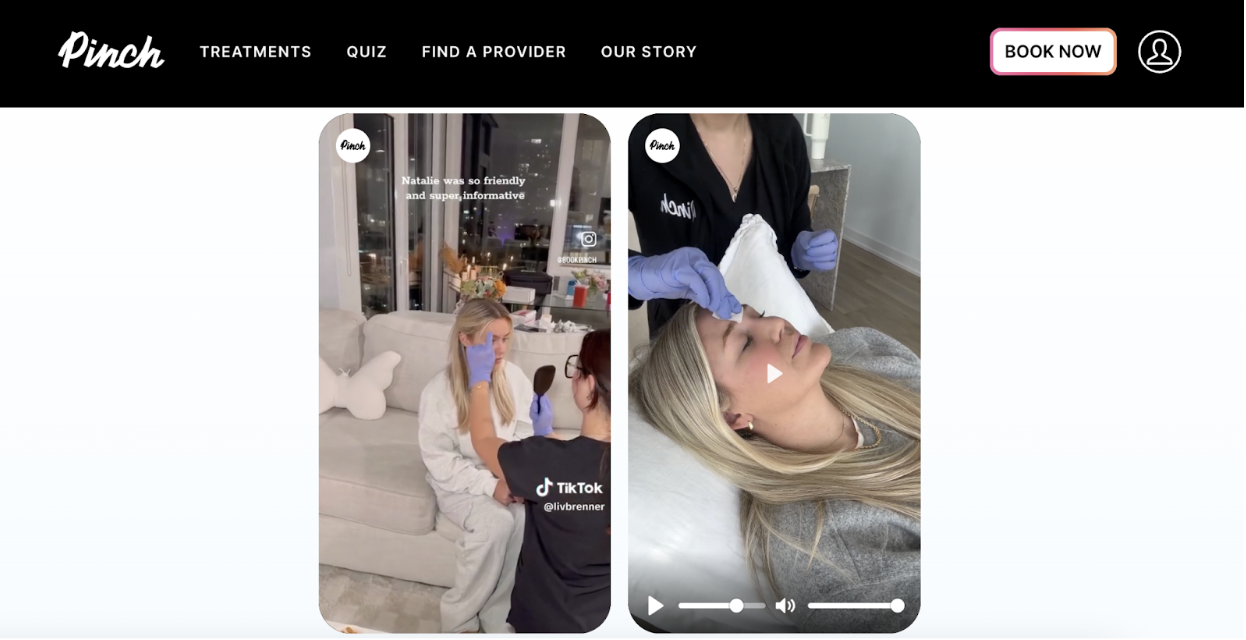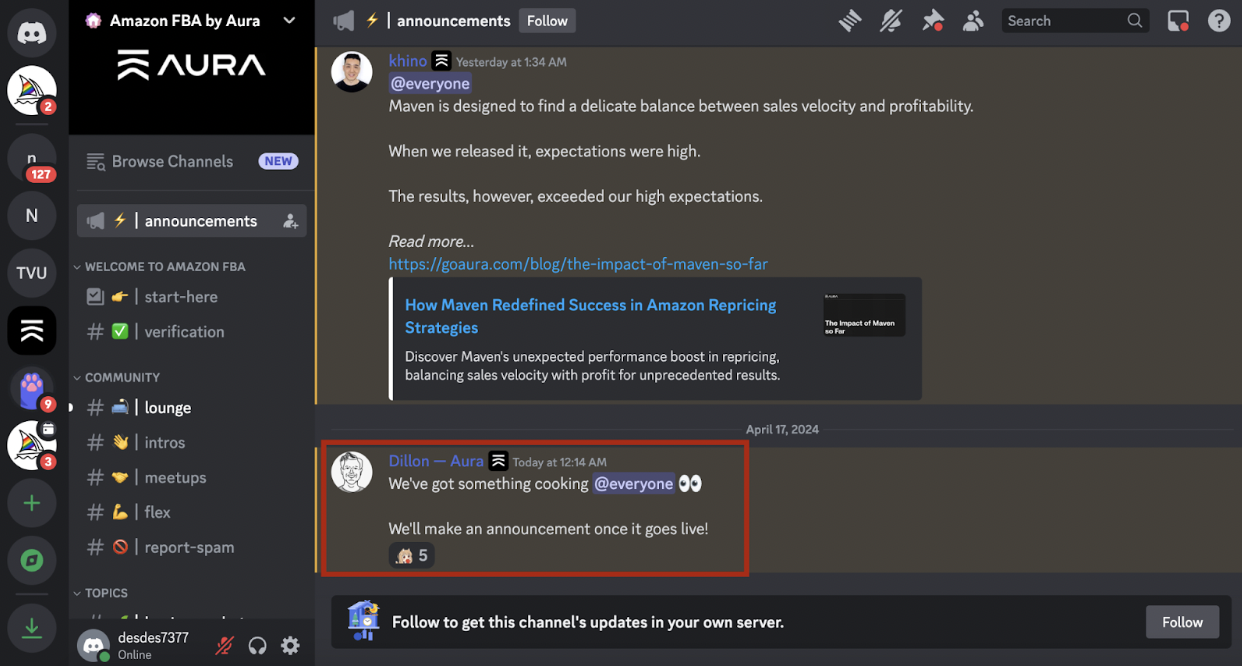Fully engaged customers spend 23% more than the average consumer.
If you’re struggling to keep your customers interested, you’re certainly not alone. This article will guide you through 10 tested customer engagement strategies designed. We will walk you through each marketing strategy, giving you the steps and tools you will need.
Let’s get right to it.
10 Most Effective Customer Engagement Strategies
Before getting into the details of each customer engagement strategy, here’s a brief comparison table to help you decide what strategies to start with.
| Strategy | Implementation Difficulty | Resource Intensive | Tech Expertise Needed |
| Get Interactive with Quizzes & Polls | Easy | No | Yes |
| Share Insider Knowledge & DIY Hacks | Easy | No | No |
| Share Stories from Happy Customers | Moderate | Yes | No |
| Spark Fun Challenges | Moderate | Yes | No |
| Anticipate Needs with Proactive Support | Moderate | Yes | No |
| Create Exclusive Loyalty Perks | Moderate | Yes | No |
| Champion Eco-friendly Practices | Moderate | Yes | No |
| Customize the Shopping Experience | Challenging | Yes | Yes |
| Build a Community Around Your Brand | Challenging | Yes | Yes |
| Bring Products to Life with AR | Challenging | Yes | Yes |
1. Get Interactive with Quizzes & Polls

Customer Engagement Strategies- Quizzes and Polls
Interactive content, like quizzes and polls are 2X more engaging compared to static content. It prompts users to actively participate rather than passively consume information which makes the experience more enjoyable and easy to remember.
When you add quizzes and polls to your website, you can keep visitors engaged longer so you can collect important data. This data helps you understand your audience better to create relevant content and campaigns that really speak to their interests.
How to Implement:
- Identify key interests and common questions among your audience. For instance, if you sell skincare products, you might focus on skin care routines or product preferences.
- Develop interest-focused quizzes and polls. For example, a quiz question could be, “What’s your biggest skin care challenge?” with options like dryness, oiliness, aging, etc.
- Use a quiz builder tool to create your interactive content and embed the quizzes and polls on your website in areas with high visibility like the homepage or main blog pages.
- Use these quizzes and polls on your Instagram Stories or Facebook posts as well to drive more traffic.
Tools Needed:
- SurveyMonkey or Typeform to create customer surveys
- Instagram polls or Facebook survey tools for social media surveys
2. Share Insider Knowledge & DIY Hacks
People value content that teaches them something useful. In fact, 53% of homeowners in the US started a DIY project after seeing it on social media.
Sharing insider knowledge and DIY hacks actively establishes your brand as an industry authority and directly solves your customers’ problems.
For example, if you’re offering DIY home project kits or children’s outdoor play equipment like this kids’ playhouse, the best hacks you can include are using color-coded pieces to quickly identify parts when assembling, offer tips on the best tools for a smoother build, or suggest ways to reinforce the structure to make it more durable.
To keep content fresh and relevant, a dropshipping business should create a ‘strategies list’ post like how this Amazon brand presence article did it.
How to Implement:
- Learn from customer feedback, scan forums, and review social media comments to pinpoint real issues your audience faces.
- Craft clear, actionable content that addresses these issues. For software users, for example, produce a video series titled “Quick Fixes,” tackling frequent user problems.
- Choose the most effective format for each piece of content—use videos for detailed processes and blog posts for quick tips.
- Make your content easy to find by organizing it clearly on your website, possibly under a dedicated ‘How-To’ or ‘Learning’ tab.
- Promote your content across all channels and apply SEO techniques to drive traffic from search engines.
Tools Needed:
- WordPress or Squarespace for a dynamic, content-focused website.
- Adobe Premiere or Vidpros to edit professional-quality videos.
- Canva or Adobe Spark to create compelling graphics that break down complex information into digestible visuals.
3. Share Stories from Happy Customers
70% of brands think of them as ways to connect better with their customers. This shows that stories from satisfied customers directly influence potential buyers.
For example, if you need to prove your expertise in a certain field, highlight the effects you have on your clients which is exactly what Alexander tutoring did. Go to the website and see how this tutoring service includes interviews from parents. Listen to how they shared about what they felt from the experience. Highlighting these results will help potential clients see what they can also benefit from.

Customer Engagement Strategies – Share Stories from Customers
Similarly, a software company could share success stories from businesses that improved their operations with their tools. By showing specific results – lower operational costs or better productivity, this user-generated content clearly demonstrates the value of the software, convincing other businesses to purchase.
How to Implement:
- Set up a system to collect customer stories through follow-up emails or social media page interactions especially if you do business on social media.
- Create a dedicated section on your website for UGCs, make it easy to access and update it regularly.
- Create video testimonials or written case studies based on these UGCs to capture the full impact of your customers’ experiences.
- Feature this UGC prominently in marketing materials, including social media and website to maximize visibility. Here is a great example from this med spa home service business. They repurposed UGCs from their Instagram Reels as testimonials in their website homepage.

Customer Engagement Strategies – UGC
5. Keep on gathering and updating customer stories to keep the content fresh and relevant.
Tools Needed:
- Adobe Premiere or iMovie to customer testimonial videos to professional standards.
- Social media platforms (like Instagram or Facebook) to gather and share customer stories.
4. Spark Fun Challenges
93% of marketers love to gamify campaigns.
Adding gamification as part of your customer engagement campaigns help transform everyday activities into engaging and shareable events. For instance, a fitness brand might roll out a “30-Day Fitness Challenge” that encourages daily exercise and lets participants track their progress and share updates online.
Similarly, a culinary brand could start a “Recipe of the Month” contest. Existing customers could use the brand’s products to create their own dishes, submit their recipes, and win prizes. The best entries can then be highlighted on your brand’s platforms.
How to Implement:
- Create a challenge that reflects your brand’s ethos and appeals to your audience. Make sure it’s accessible yet sufficiently challenging to keep participants engaged.
- Set up a dedicated, user-friendly landing page on your website where participants can register, monitor their progress, and stay updated on the latest challenge news.
- Use social media to promote the challenge, boost sharing, and sustain momentum. Regularly update content with engaging comments or emojis to keep participation levels high.
- Offer enticing rewards that align with your audience’s preferences. Rewards could include product discounts, special merchandise, or public recognition.
- At the challenge’s end, feature a celebratory campaign that highlights participant achievements and the community that grew around the challenge to reinforce the positive experience.
Tools Needed:
- Strava or MyFitnessPal to track activities in fitness challenges.
- Wix or Squarespace to create and manage a custom challenge landing page.
- Social media platforms( Instagram and Facebook) to promote the games, make updates, and engage a community.
- Mailchimp for email campaigns to recruit participants, send reminders, and acknowledge their successes.
5. Anticipate Needs with Proactive Support
Anticipate and address issues early to minimize customer frustration. For example, if you operate within the brokerage industry like this business selling platform, create a checklist to help buyers identify businesses that suit their interests. Also, offer a detailed guide outlining the steps and documents needed for the buying process.
Or another example: an affiliate business promoting products like workout or sports equipment. If you promote from more than 1 brand, create review guides to help the consumer decide what product to go for much like how this golf rangefinder review did it. It’s not just a bunch of text, you will find helpful information – price, discounts, and even alternatives to help the reader decide and finally purchase.
How to Implement:
- Analyze customer behavior and common queries to identify patterns that might indicate a need for support.
- Set up automated systems that can detect these signals and trigger support actions, such as sending helpful emails or messages directly through the product interface.
- Train your support team to understand these predictive signals and empower them to reach out proactively to customers who may need assistance.
- Create a resource hub that includes FAQs, troubleshooting guides, and how-to videos that customers can easily access to find solutions on their own.
- Gather feedback on how effective customers find you proactive support and use it to refine and improve your approach.
Tools Needed:
- Zendesk or Freshdesk to manage customer support tickets and automate responses.
- Google Analytics or Mixpanel to track customer behavior on your website or app.
- Mailchimp or HubSpot to automate email communications for timely support and resources.

Customer Engagement Strategies- Affiliate Marketing
6. Create Exclusive Loyalty Perks
Creating exclusive brand loyalty perks incentivizes customers to continue engaging with your brand. This enhances customer retention and lifetime value.
For instance, a coffee shop might offer a “VIP Coffee Club” where members earn points with each purchase that can be redeemed for free drinks or special discounts. This reward system encourages repeat business and makes customers feel appreciated and part of a valued community.
In the digital realm, an online retailer could implement a tiered customer loyalty program that offers more substantial rewards as customers reach higher spending thresholds. You could offer benefits like free shipping, early access to new products, or exclusive sales events. These perks make customers more likely to increase their purchases for the higher-tier rewards.
How to Implement:
- Define the structure of your loyalty program. Consider what behaviors you want to encourage and what rewards will be most appealing to your loyal customers.
- Develop a simple and clear sign-up process, ideally integrated seamlessly into the customer journey.
- Use a loyalty platform to track customer purchases and interactions, automatically updating point totals and rewards status.
- Analyze customer participation and purchasing patterns to keep on refining the program and make sure it’s attractive and competitive.
Tools Needed:
- LoyaltyLion or Smile.io to create and manage a sophisticated loyalty program.
- Shopify or Magento, eCommerce platforms that support integrated loyalty solutions.
- Klaviyo or Mailchimp to members informed about their loyalty benefits.
- Salesforce or similar CRM software to keep detailed customer profiles and track interactions.
7. Champion Eco-friendly Practices
55% of consumers are willing to pay more for eco-friendly brands. Adopting eco-friendly practices lets you tap into a customer segment that values sustainability. You are not just appealing to environmentally conscious consumers. You’re also positioning your brand as a forward-thinking leader committed to making a positive impact.
For example, a clothing retailer could commit to using only organic materials and recycled packaging. This helps build a positive public image and customer loyalty.
A tech company might take a different approach by implementing an e-waste recycling program. They could encourage customers to bring in their old electronics for proper disposal and offer a discount on new purchases in return.
How to Implement:
- Identify key areas where your business can incorporate more sustainable practices, such as sourcing materials, reducing waste, or conserving energy.
- Develop clear, actionable plans to make these changes and set measurable goals to track your progress.
- Educate your customers about the benefits of these eco-friendly initiatives through your website, blog posts, and social media channels.
- Certify your products or business with recognized eco-labels to gain credibility and visibility among eco-conscious consumers.
Tools Needed:
- Green Seal or Energy Star, certification programs that validate environmental friendliness.
- Hootsuite or Buffer to promote your green initiatives effectively.
- Google Analytics to monitor the impact of your eco-friendly messaging on customer engagement and sales.
- SurveyMonkey to gather customer feedback on your environmental efforts and suggestions for improvement.
8. Customize the Shopping Experience
When you tailor the shopping experience to fit each customer’s preferences, you do more than just meet their expectations—you make them feel special. This personalized service approach encourages customers to come back. They’ll remember the convenience and attention to detail, setting you apart from competitors who offer a one-size-fits-all customer experience.
For instance, an online bookstore might use browsing history and past purchases to recommend books that align with a customer’s interests. Or a fashion retailer, customization could extend to offering a virtual try-on feature where customers can see how clothes might look on their body type before making a purchase.
How to Implement:
- Use Google Analytics to monitor customer interactions and preferences to learn about user behavior.
- Analyze customer data using Microsoft Power BI to visualize and analyze behavior patterns. Assign this to your sales team or a specific team member.
- Develop dynamic content based on the visitor’s profile.
- Use A/B testing to refine website customizations and make sure they meet customer needs and improve the overall shopping experience.
Tools Needed:
- Adobe Experience Manager to create dynamic content
- Optimizely or Google Optimize for A/B testing different customizations and determining which ones most positively impact customer engagement and sales.
9. Build a Community Around Your Brand
Building a community around your brand creates a vibrant space where customers feel a personal connection to your business. This sense of belonging can transform one-time buyers into lifelong customers who might even advocate for your brand.
For instance, a fitness brand might create an online forum where users can share workout tips, celebrate achievements, and even organize local meet-ups. Or a craft supply store could take a different approach by hosting live crafting sessions on social media platforms where participants can ask questions, provide feedback, and interact with each other in real-time.
How to Implement:
- Identify common interests or passions that align with your brand and your customer base.
- Establish a platform for your community like a branded online forum, social media group, or dedicated app, where members can interact. Here’s a great example from Aura, an Amazon repricing tool. They built a Discord community and kept members interested with enticing updates.
- Create discussions using regular content updates and prompts.
- Recognize and reward active community members with exclusive content, discounts, or early access to new products or services to encourage them to stay active.
- Monitor and moderate the community to make sure interactions stay healthy. If you’re busy with other responsibilities, hire an affordable social media moderator through services like Genius. This frees up your time and can save you up to 80% on hiring costs without losing quality.

Customer Engagement Strategies- Consumer Communities
Tools Needed:
- Discord or Mighty Networks to host and manage your brand community.
- Facebook Groups or Instagram Live as social media options that offer easy access to users.
- Trello or Asana to organize community activities and manage content schedules.
10. Bring Products to Life with AR
7 out of 10 shoppers say that AR apps will encourage them to shop more frequently.
Integrating Augmented Reality (AR) lets customers see how products would look in their homes or on themselves. This direct, interactive customer experience helps customers feel more confident about their choices, making them more likely to go through with a purchase.
For example, a furniture retailer could use AR to let customers see how a sofa would look in their living room, adjusting colors and styles in real-time. Or for a cosmetic brand, AR can provide customers with a virtual makeup tester so they can try different shades and styles on their live image via their smartphone.
How to Implement:
- Identify products that would benefit most from AR visualization, and focus on those where size, fit, or style are crucial decision factors.
- Partner with AR technology providers to integrate AR tools into your online platforms. These should be user-friendly and accessible across various devices.
- Launch the AR feature with clear instructions and visual guides to make sure customers understand how to use it.
- Promote the AR capability in all marketing channels, and emphasize the try-before-you-buy advantage to attract customers.
Tools Needed:
- ARKit or ARCore to build AR experiences.
- Vuforia or ZapWorks to create immersive AR content.
- Unity or Unreal Engine to support complex AR development for more interactive and engaging applications.
Conclusion
As you put these 10 customer engagement strategies into practice, remember that the key to gaining a competitive edge lies in genuinely understanding and addressing your customers’ needs.
Stay adaptable and responsive – keep on refining your approach based on customer feedback and shifts in the market. Doing this, you will turn your customers into advocates for your brand – ultimate endorsement in today’s competitive landscape.
As you refine these strategies, having the right domain will amplify your brand’s presence online. Explore ShortDot to secure a domain that matches your brand identity and makes your business visible to the target audience.
Author Bio:

Burkhard Berger
Burkhard Berger is the founder of Novum™. He helps innovative B2B companies implement modern SEO strategies to scale their organic traffic to 1,000,000+ visitors per month. Curious about what your true traffic potential is?
- Gravatar: vip@novumhq.com
